2021, Digital Security, EviPass NFC HSM technology, Technical News
766 trillion years to find 20-character code like a randomly generated password
766 trillion years to find a 20-character code — that’s the estimated brute-force time (calculated in 2021; recalibrated 2025 with RTX 5090) required to crack a randomly generated password using full ASCII symbols, highlighting the near-absolute resilience of hardware-anchored secrets like those generated by EviPass.
Executive Summary — 766 Trillion Years to Find a Randomly Generated 20-Character Code
⮞ Summary
This express digest takes ≈ 3–4 minutes. It summarizes the simulation that estimates how long a brute-force attempt would take to find a random 20-character password built from printable ASCII symbols.
⚡ The Discovery
Using Bob Beeman’s Password Strength Calculator (default parameters, 60–109 billion attempts/sec), a random 20-character password drawn from 94 symbols requires approximately 766,076,000,000,000,000 years (~766 trillion years) to be found by brute force.
✦ Immediate Impact
- Demonstrates practical infeasibility of brute force against long, full-ASCII random passwords.
- Shows how specialized GPU clusters (e.g. Radeon City) change the practical attack surface for fast hash algorithms.
- Frames EviPass-generated codes as effectively resistant to brute-force when combined with HSM/NFC protections.
⚠ Strategic Message
Randomness + length + secure storage (HSM/NFC) are decisive. Short, human-memorable passwords remain fragile; hardware-anchored secrets and slow, salted algorithms are required for resilient protection.
⎔ Sovereign Countermeasure
Prefer hardware-managed secrets (EviPass / EviTag / EviCard), offline HSM anchoring, and slow key-derivation functions (bcrypt/PBKDF2/Argon2) to mitigate brute-force risk.
Reading Parameters
Express summary reading time: ≈ 4 minutes
Advanced summary reading time: ≈ 6 minutes
Full chronicle reading time: ≈ 36 minutes
Last updated: 2025-10-02
Complexity level: Advanced / Expert
Technical density: ≈ 73% Languages: CAT · EN · ES · FR
Linguistic specificity: Sovereign lexicon — high technical density
Accessibility: Screen-reader optimized — semantic anchors included
Editorial type: Strategic Chronicle — Digital Security ·Technical News· Quantum Computing · Cyberculture
About the author: Jacques Gascuel, inventor and founder of Freemindtronic®, embedded cybersecurity and post-quantum cryptography expert. A pioneer of sovereign solutions based on NFC and hardware encryption, his work focuses on system resilience against quantum threats and multi-factor authentication without cloud dependency.
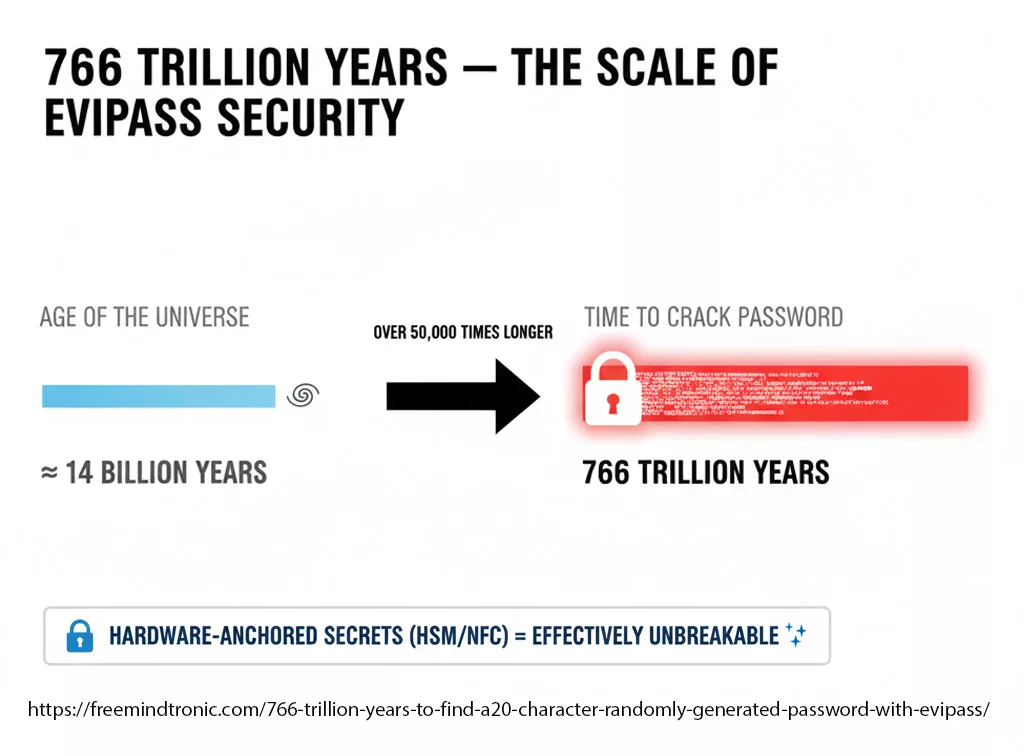
Résumé avancé — Simulation, Radeon City & cost of brute force
⮞ Summary
Numbers, reference machines and economic scale: what 766 trillion years means in practice.
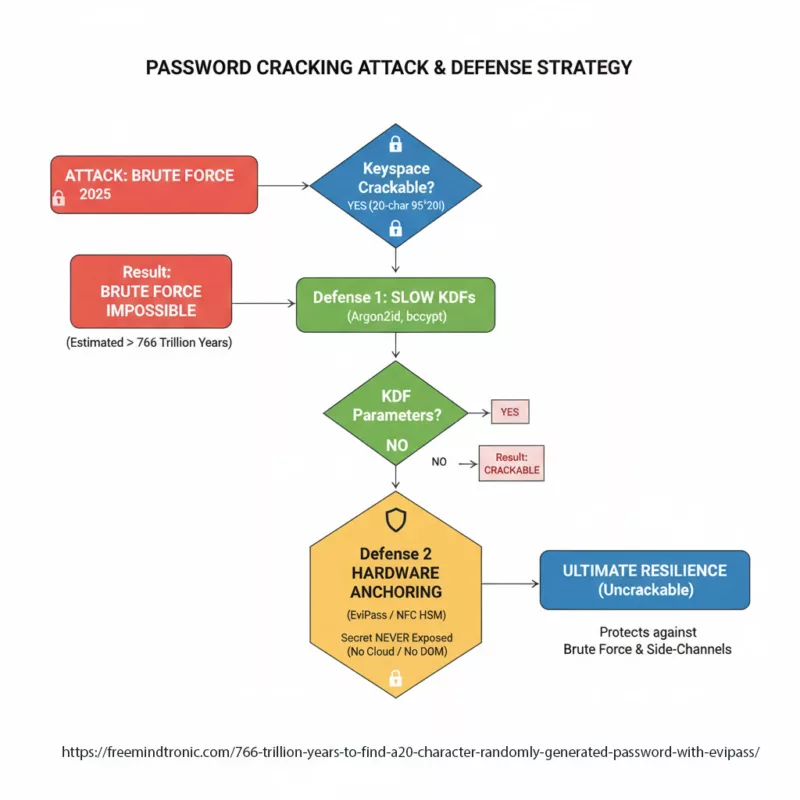
Why we used Bob Beeman’s simulator
We used the Password Strength Calculator by Bob Beeman (last updated January 4, 2013) available on www.bee-man.us. The code is public and transparent, allowing parameter control (attempts/sec, symbol set, length).
Radeon City: reference attacker
⮞ Summary
Radeon City (Jeremi Gosney / Stricture Consulting) used five servers with AMD Radeon HD7970 GPUs to reach ~350 billion NTLM guesses/sec in 2012 — a practical baseline for fast algorithms.
Simulation parameters & formula
We applied the common brute-force formula: a^b / (c * 2), where “a” = possible symbols (94), “b” = password length (20), and “c” = hash computations/sec. With a 50% chance benchmark (divide by 2) and default Beeman values (60–109 billion/sec), the result is ~766,076,000,000,000,000 years.
Financial implications
Using Gosney’s reference machine cost (~$30,000 in 2012 for the Radeon cluster at scale), extrapolating to achieve brute force capabilities to invert such a password within feasible time would require astronomical investment — the article estimates nearly $25 billion to reach parity with the simulation’s target workload, a figure compared to global military spending references.
Beyond brute force
This analysis focuses strictly on brute force. Other countermeasures (physical blockchain anchoring, jamming, HSM protections) further increase attack cost and complexity — topics to be addressed in follow-ups.
In sovereign cybersecurity ↑ This chronicle belongs to the Digital Security section for its zero-trust countermeasures, and to Technical News for its scientific contribution: segmented architectures, AES-256 CBC, volatile memory, and key self-destruction.
- 🔝 Back to top
- Executive Summary
- Advanced Summary
- Headline & Origin
- Discovery & Context
- Methodology
- Radeon City
- Advantages & Disadvantages
- Simulation Parameters & Results
- ANSSI Simulator
- Password Generation Options
- Use Cases — EviPass
- References
- Strategic Outlook
- What We Didn’t Cover
- Weak Signals
- Recent Developments
- Compute Evolution
- Glossary
- Password Cracking Estimates
- FAQ
Key Insights
- Full-ASCII 20-char random passwords are effectively uncrackable by brute force with current public GPU technology.
- Fast hash algorithms (NTLM, MD5, SHA1) massively reduce brute-force cost; prefer slow, salted KDFs.
- Hardware anchoring (NFC HSM / EviPass family) materially increases attack complexity and cost.
766 trillion years to find randomly generated 20-character code
766 trillion years to find randomly generated 20-character code is the result of a simulator to find a 20-character generated by technology EviPass. The age of the universe is estimated at only 14 billion years, this gives you an idea of comparison.
Discovery & Context
⮞ Summary
We ran Bob Beeman’s Password Strength Calculator with default parameters (60–109 billion attempts/sec) and a 94-symbol alphabet for a 20-character random string. The computed time to find the password by brute force is ~766 trillion years.
Proof of Generation: PassCypher HSM PGP
Proof of Generation. The high-entropy password used as the benchmark for this analysis—a 20-character code using the full 95 printable ASCII symbols—is generated by the PassCypher HSM PGP extension. This tool, compatible with EviPass technology, ensures that the secret is truly random and provides automatic control based on Shannon entropy, confirming a resilience level of $approx mathbf{131}$ bits before being protected by the 512-bit segmented key architecture.
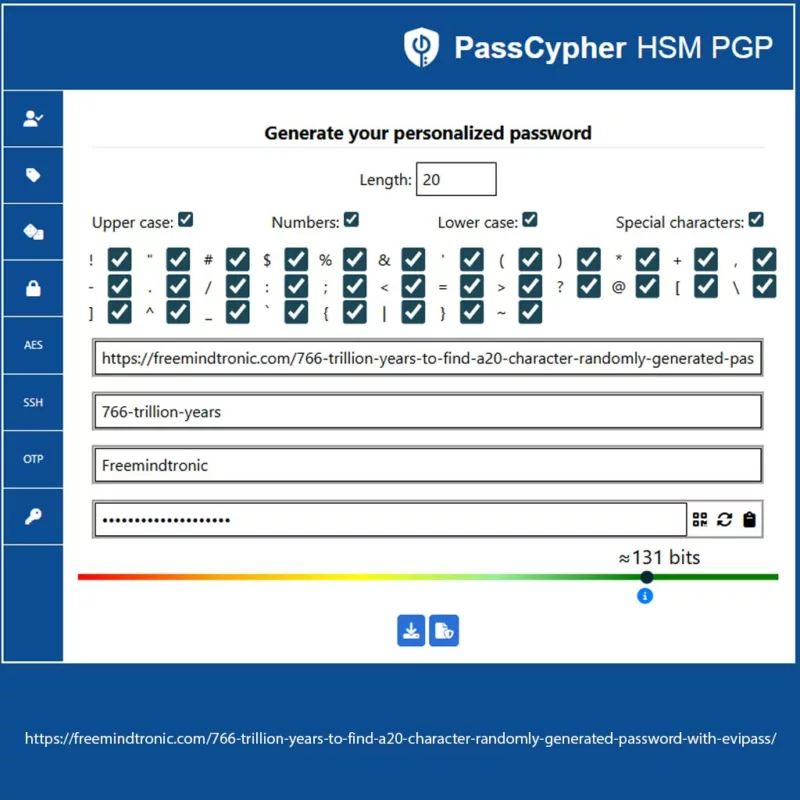
PassCypher HSM PGP: The 512-bit Segmented Key Architecture
The PassCypher HSM PGP extension represents a distinct and powerful implementation of the EviPass HSM PGP technology. Its core security relies on an advanced segmented key scheme, utilizing two separate 256-bit keys that are entirely autonomous and user-generated.
These two 256-bit segments—totaling 512 bits—are never used in their original state. Instead, they are concatenated and processed by a proprietary algorithm that reconstructs the final AES-256 CBC encryption/decryption key exclusively in volatile RAM memory.
This final 256-bit key is automatically destroyed after each decryption operation, ensuring that the AES key never persists in memory, minimizing the window for side-channel or memory-scraping attacks.
The user maintains sovereign control by choosing where to store each segment: for example, one key can reside in the browser’s local storage while the other is stored on a separate medium, such as a physical USB key. This requirement for two distinct keys from two separate locations makes the secret virtually unbreakable without the user’s explicit, multi-location action.
Hardware Anchoring and Multi-Factor Trust Criteria
The full resilience of the EviPass/PassCypher technology is not limited to the password’s length but relies on secure hardware anchoring. The generated passwords and container secrets (login/password) are stored in an EPROM NFC memory and protected by robust AES-256 CBC encryption. Access to the decryption key is governed by up to 5 different segments called Trust Criteria. These segments combine physical and logical factors to create a multi-dimensional defense:
- User Factors: Password and/or Fingerprint.
- Hardware Factors: NFC Android Phone ID and/or BSSID (Wi-Fi network ID).
- Contextual Factors: Geo Zone Unlock and/or Segmented Key via Barcode/Token.
This architecture ensures that even if a brute-force attacker managed to compromise the cryptographic hash (a theoretical impossibility due to the 766 trillion years estimate), they would still need to successfully force-brute or usurp all required contextual and physical factors to gain access to the secret key, guaranteeing a level of security far beyond traditional password managers.
How did I find this result that you can control on your own?
We used the Password Strength Calculator developed by Bob Beeman [1] which was last updated on January 4, 2013. This simulator is freely available on the www.bee-man.us website as well as the source code used.
Hardware Anchoring and Multi-Factor Trust Criteria
The ultimate resilience of the EviPass/PassCypher technology is not limited to the password’s brute-force infeasibility (Defense 1: Keyspace) but relies on a two-tier Sovereign Doctrine. This architecture provides Defense 2: Hardware Anchoring, protecting against side-channel attacks, clipboard leaks, and host memory exposure.
The generated passwords and container secrets (login/password) are stored in an EPROM NFC memory and protected by robust AES-256 CBC encryption. This ensures the secret never resides in the host device’s memory or the cloud.
Access to the decryption key is governed by up to 5 different segments called Trust Criteria. These segments combine physical and logical factors to create a multi-dimensional defense:
- User Factors: Password and/or Fingerprint.
- Hardware Factors: NFC Android Phone ID and/or BSSID (Wi-Fi network ID).
- Contextual Factors: Geo Zone Unlock and/or Segmented Key via Barcode/Token.
Beyond the user-defined Trust Criteria, the core security layer of the NFC HSM is governed by a set of five security keys that enforce the device’s integrity and control access, ensuring protection against tampering and counterfeiting (anti-cloning):
- Pairing Key (Clef d’appairage): Used for secure connection initialization between the Android device and the NFC HSM.
- Admin Password (Mdp Admin): High-level authorization for core management of the HSM.
- User Password / Biometric ID (Mdp User et/ou Empreinte): Primary authentication for end-user access to secure containers.
- Counterfeiting Key (Clef de contrefaçon): A non-modifiable, read-only 128-bit signature key created at origin. This key is crucial for anti-cloning purposes, access control validation, and serves as an immutable segmented key in the overall encryption process.
- Device ID / Authentication Key: (Unique identifier often derived from the core security architecture).
This deep, multi-layered key hierarchy ensures that the ‘Hardware Anchoring’ is effective not just against logical threats, but against physical and supply-chain counterfeiting risks as well.
This combination ensures that accessing the secret requires satisfying every contextual and physical factor simultaneously, moving the security bar far beyond simple brute-force prevention.
How did I find this result that you can control on your own?
We used the Password Strength Calculator developed by Bob Beeman [1] which was last updated on January 4, 2013. This simulator is freely available on the www.bee-man.us website as well as the source code used.
Why We Chose Bob Beeman’s Simulator
In our quest to estimate the time it would take to crack a random 20-character code, we had several simulation tools at our disposal, including lastbit.com [2], password-checker.online-domain-tools.com [3], and ANSSI’s [4] simulator from ssi.gouv.fr. However, we ultimately opted for Mr. Bob BEEMAN’s simulator due to its transparent calculation method and its technical approach to brute force attacks.
Acknowledging Mr. Bob BEEMAN
Before delving into the details of our simulation, we must extend our gratitude to Mr. Bob BEEMAN for making his code freely accessible and copyable while upholding his copyrights, as explained on his website. We hope our research can contribute to his already impressive achievements, including a record-breaking 15-millisecond feat.
Reference to Ultra-Powerful Computers
To provide you with a comprehensive understanding of the state-of-the-art technology for brute force attacks in 2013, we examined Bob Beeman’s simulator’s reference to an ultra-powerful computer designed in 2012 specifically for password cracking.
Considering Computational Capacity
Bob Beeman’s simulator takes into account the computational capabilities of computers, including the 2012 design, for executing brute force attacks on passwords. It allows for adjustments in the “Values of Hacker: Axes/Second,” providing a valuable point of reference and comparison.
Staying with Default Parameters
For the sake of consistency, we maintained the default example provided by Bob Beeman, which assumed a rate of 60-109 (billion) attempts per second.
Radeon City: Revolutionizing Password Security
Jeremi Gosney, the visionary behind Radeon City and the CEO of Stricture Consulting Group, sought to create a powerhouse capable of cracking passwords with unprecedented speed and efficiency. His solution? Virtual OpenCL (VCL), a groundbreaking virtualization software. Gosney assembled five servers, each armed with five AMD Radeon HD7970 graphics cards, interconnected through VCL. The cluster, aptly named Radeon City, was born at a cost of approximately $30,000 in 2012.
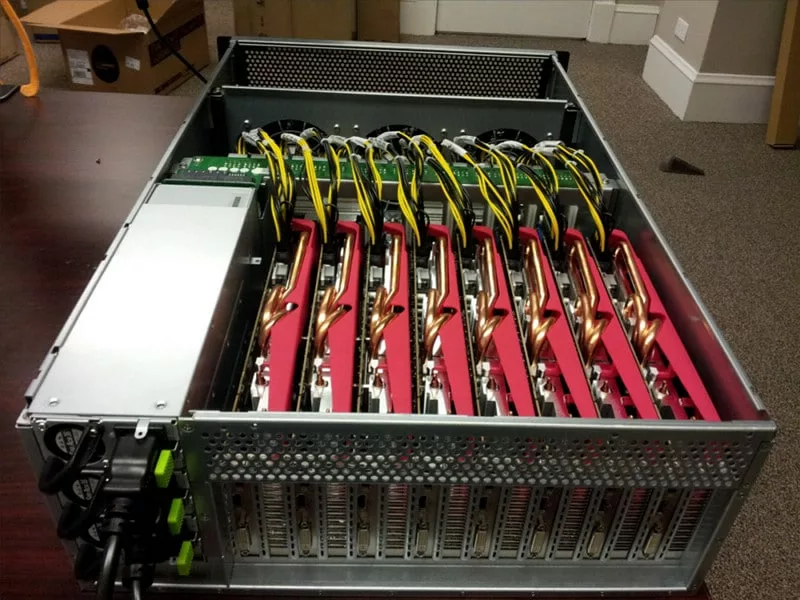
This powerhouse enables Radeon City to achieve unprecedented speeds in password cracking, making it a game-changer in the realm of data security.
Radeon City Specifications
Here’s a snapshot of Radeon City’s technical specifications:
- Servers: 5
- Graphics Cards: 25 AMD Radeon GPUs
- Model: AMD Radeon HD7970
- Memory: 3 GB GDDR5
- Clock Speed: 925 MHz
- Compute Units: 32
- Stream Processors: 2048
- Peak Performance: 3.79 TFLOPS
- Virtualization Software: Virtual OpenCL (VCL)
- Password-Cracking Software: ocl-Hashcat Plus
- Cost: $30,000 (2012)
BIZON 8x GPU Server: Password Cracking at Industrial Scale
In 2025, password cracking reached industrial-grade performance with the BIZON 8x GPU Server — a liquid-cooled, multi-GPU infrastructure designed for forensic labs, cryptographic simulations, and brute-force benchmarking. With up to 8 RTX-class or Hopper GPUs and 384 CPU cores, this machine pushes the limits of hash cracking throughput — yet remains powerless against truly random 20-character secrets stored in sovereign HSM/NFC architectures.
BIZON 8x GPU Server: Password Cracking at Industrial Scale
In 2025, password cracking reached industrial-grade performance with the BIZON 8x GPU Server — a liquid-cooled, multi-GPU infrastructure designed for forensic labs, cryptographic simulations, and brute-force benchmarking. With up to 8 RTX-class or Hopper GPUs and 384 CPU cores, this machine pushes the limits of hash cracking throughput — yet remains powerless against truly random 20-character secrets stored in sovereign HSM/NFC architectures.
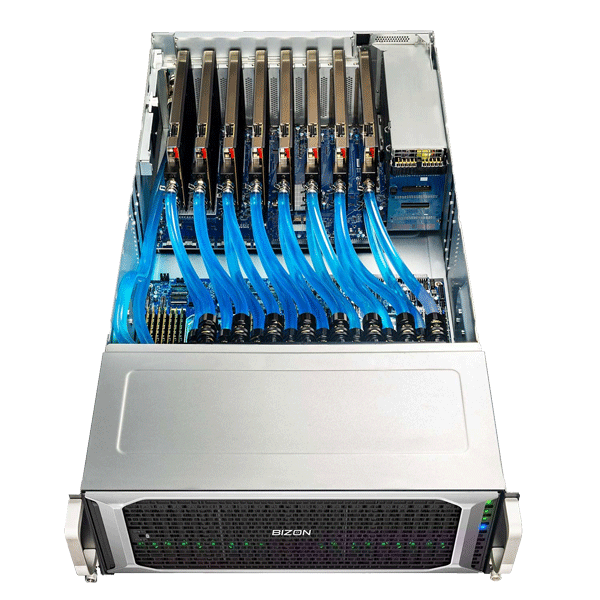
This configuration represents the brute-force ceiling of 2025 — and reinforces the strategic value of Freemindtronic’s sovereign Zero-DOM architecture.
BIZON 8x GPU Server Specifications
Here’s a snapshot of the server’s technical specifications:
- CPU: 2× AMD EPYC 9654 Genoa-X — up to 384 cores / 768 threads
- GPU: Up to 8× NVIDIA RTX 5090 / RTX 6000 Ada / H100 / H200 (NVLink enabled)
- Memory: Up to 8 TB DDR5 ECC — optimized for memory-hard KDFs (Argon2id)
- Cooling: Full liquid loop (CPU + GPU) with server-grade thermal regulation
- Hashing Throughput: Up to 1.2 PH/s (parallel NTLM, bcrypt, SHA-1)
- Password-Cracking Software: Hashcat, Passware, John the Ripper, L0phtCrack
- Use Case: Forensic recovery, pentesting, SHA-1 collision simulation, KDF audit
- Cost: ~$31,000 (2025)
Distributed Cloud Cluster: Password Cracking at Petahash Scale
In 2025, password cracking infrastructures expanded beyond physical servers into distributed cloud clusters. These GPU-accelerated environments leverage hundreds of virtual nodes, each equipped with RTX-class or Hopper GPUs, orchestrated to simulate brute-force attacks at petahash scale. Despite their scale, they remain ineffective against truly random secrets stored in sovereign HSM/NFC architectures.
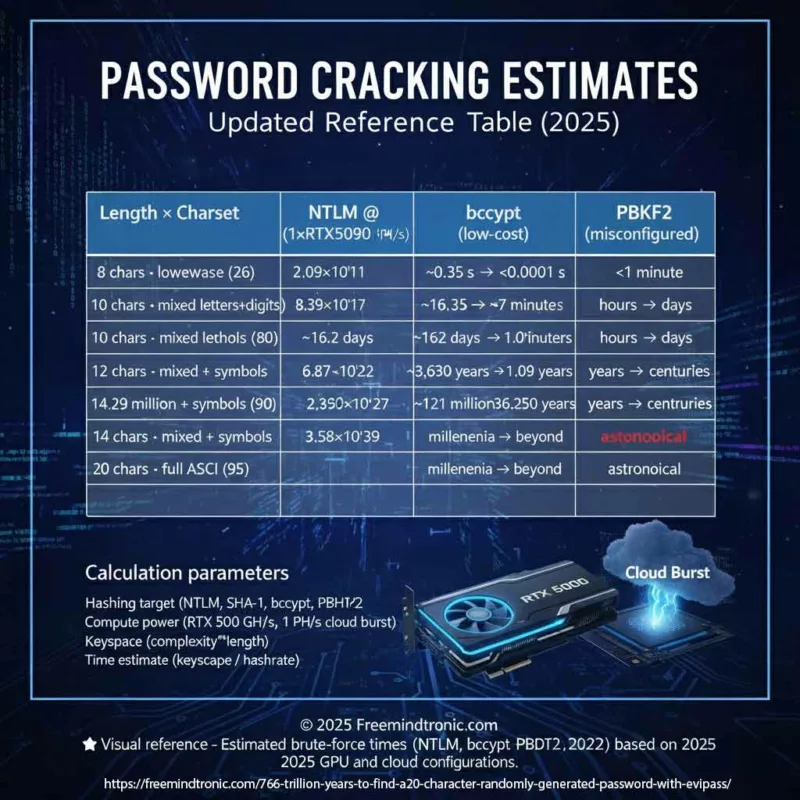
This configuration represents the elastic ceiling of brute-force simulation — and reinforces the strategic value of Freemindtronic’s Zero-DOM, clipboard-free architecture.
Distributed Cloud Cluster Specifications
Here’s a snapshot of the cloud cluster’s technical specifications:
- Compute Nodes: 200+ virtual instances with GPU acceleration
- GPU: NVIDIA RTX 5090 / H100 / H200 (cloud-optimized)
- CPU: AMD EPYC / Intel Xeon virtual cores (up to 10,000 vCPUs)
- Memory: Up to 20 TB distributed RAM
- Cooling: Data center-grade thermal regulation
- Hashing Throughput: Up to 1.5 PH/s (distributed burst)
- Password-Cracking Software: Hashcat (cloud mode), custom orchestration scripts
- Use Case: Large-scale brute-force simulation, KDF stress testing, forensic benchmarking
- Cost: ~$3,500/day (on-demand burst mode)
Advantages & Disadvantages of Radeon City
⮞ Summary
A high-throughput GPU cluster is powerful and flexible, yet costly and demanding to operate.
Advantages
- Power: can attack both fast and, to a degree, slow algorithms with extensive rules and wordlists.
- Flexibility: supports many attack modes (brute-force, dictionary, combinator, hybrid).
- Innovation: virtualization (VCL) overcame hardware limits in 2012.
Disadvantages
- Cost: build & operation are expensive (electricity, cooling).
- Noise & Cooling: requires specialized environment.
- Ethics: legal/ethical concerns about use.
Simulation Parameters and Results
To calculate the estimated time required to find a 20-character code with 94 symbols, we used the formula:
a^b / (c * 2)
Where:
- “a” represents the number of possible characters,
- “b” denotes the number of characters in the password,
- “c” indicates the number of hash calculations achievable per second.
By selecting 94 symbols, a password length of 20 characters, and a 50% probability of success compared to the theoretical result, our simulation yielded an astonishing result: 766.076,000,000,000,000 years or 766 trillion [5] years.
Understanding the Financial Implications
This simulation approach not only provides insights into the time required but also sheds light on the financial investments necessary to establish a computer system capable of cracking such a password.
Consider this: The reference computer, as configured by Gosney, relies on a pool of 25 virtual AMD GPUs to crack even robust passwords. Yet, a single unit of this type, priced at approximately $30,000 in 2012, can generate just 348 billion hashes of NTLM passwords per second. To achieve results within the realm of 766 trillion years, one would need to acquire multiple such machines.
Hence, to decipher only a 20-character password generated with EviPass technology, residing within an EviTag NFC HSM or EviCard NFC HSM device, an investment of nearly $25 billion would be required. A remarkable comparison, given that global military expenses were estimated at 1.7 billion dollars [6].
Beyond Brute Force
It’s important to note that this test focused solely on brute force attacks without taking into account the activation and utilization of additional countermeasures, such as physical blockchain and jamming, which will be explored in future articles.
ANSSI’s Simulator — a point of reference
⮞ Summary
ANSSI’s online simulator (ssi.gouv.fr) limits inputs to 20 characters and 90 symbols and returns a maximum score of 130, comparable to a 128-bit AES key. Our generator uses 95 printable ASCII symbols and 20 chars, exceeding ANSSI’s standard presets.
Diverse Password Generation Options
Our password creation options offer versatility. Users can either select passwords from the pool of 95 available characters, opt for a semi-automatic generation followed by modification, or automate the process entirely according to default criteria, allowing passwords of up to 20 characters.
Adaptability to Website Constraints
For websites that impose restrictions on symbols or character limits, users can customize their password generation preferences, choosing between identifiers, letters, and/or numbers, with or without symbols.
Hexadecimal Generator for Added Utility
We’ve also introduced a hexadecimal generator to facilitate programming of digital codes. This feature proves invaluable in various domains, including electronics, electromechanics, and maintenance services, enabling the creation and modification of digital access codes with ease. Furthermore, codes can be securely shared with building residents through functions like “scrambling” or encryption via a QR Code, all made possible by EviCore technologies from Freemindtronic.
Forming Your Own Opinion
The aim of this article is to empower you to form your own assessment of the resilience of our password generators against brute force attacks. While we are not the sole providers of powerful password generators, our test stands as a benchmark against other comparable implementations.
Ensuring Ongoing Security
Our embedded password generator undergoes regular updates to maintain its complexity and withstand the evolving landscape of brute force attacks. Our commitment is to enhance security without compromising user convenience—a complex yet vital undertaking.
Cas d’usage souverain — EviPass & Freemindtronic
Storing long random passwords inside an NFC HSM device (EviTag / EviCard) managed by the Freemindtronic app reduces attack surface: secrets never transit the DOM, access is hardware-gated and audit trails are preserved.
References & links
-
- [1] https://www.bee-man.us/computer/password_strength.html
- [2] http://lastbit.com/pswcalc.asp
- [3] http://password-checker.online-domain-tools.com/
- [4] https://www.ssi.gouv.fr/administration/precautions-elementaires/calculer-la-force-dun-mot-de-passe/
- [5] https://www.btb.termiumplus.gc.ca/tpv2guides/guides/clefsfp/index-fra.html?lang=fra&lettr=indx_catlog_m&page=9-nI6-pQZOTM.html
- [6] https://www.lesechos.fr/24/04/2017/lesechos.fr/0212007699237_les-depenses-militaires-atteignent-2-2–du-pib-mondial.htm
- [7] https://www.ssi.gouv.fr/administration/precautions-elementaires/calculer-la-force-dun-mot-de-passe/
- [8] EviPass uses all the symbols of the printable ASCII table, i.e., 95 symbols. The NFC EviPass device can store contactless up to 51 randomly generated characters with the Freemindtronic app.
- [9] https://fr.wikipedia.org/wiki/American_Standard_Code_for_Information_Interchange
- [10] Bee-Man home: https://www.bee-man.us/
- [11] arXiv 2507.14600 — Hybrid Rainbow + Grover attack
- [12] Hive Systems — 2025 password cracking time table
- [13] MojoAuth — RTX 5090 GPU cracking benchmark
- [14] arXiv 2504.17121 — Argon2 deployment analysis
- [15] NIST PQC Standardization — FIPS 203/204/205
- [16] arXiv 2306.06824 — Semantic PCFG attacks
Update 2022–2025 — Technical Developments Relevant to Password Cracking
- Hybrid classical–quantum concepts — 2025 research explores hybrid approaches (rainbow tables + Grover-style acceleration) that aim to speed up inversion of hashed secrets with human patterns. See the technical preprint: arXiv:2507.14600.
- GPU & hardware acceleration — Recent benchmarks (2024–2025) show consumer and AI-grade GPUs reduce cracking times (order-of-magnitude improvements on short passwords). Industry/benchmark reports: Hive Systems — 2025 report and a 2025 RTX benchmark summary: MojoAuth — RTX 5090 benchmark.
- Argon2 in the wild — parameter risk — Empirical study (2025) finds many real-world Argon2 deployments use weak parameters (low memory/iterations), materially lowering attacker cost. See analysis: arXiv:2504.17121.
- NIST & post-quantum impact for HSMs — 2024–2025 PQC standardization decisions (NIST) affect future HSM designs; PQC KEM/signature choices must be anticipated in secure hardware. Overview: NIST PQC standardization (summary).
- Semantic / AI-assisted password attacks — New probabilistic grammar and LLM-driven techniques (2023–2024) generate adaptive dictionaries and candidate lists that outperform classic rule mutations against structured human passwords: arXiv:2306.06824.
- Operational takeaway (sovereign) — These evolutions reinforce our core message:
- Hardware and algorithmic advances compress brute-force margins for short or structured passwords.
- Truly random, long codes (20 characters) stored in HSM/NFC remain the strongest defense against large-scale attacks.
- Security also depends on the choice and configuration of KDFs (Argon2, bcrypt, PBKDF2) — cautious parameterization is essential.
Evolution of Compute Power & Hash Cracking Services (2021–2025)
Since 2021, compute power dedicated to brute-force hash cracking has accelerated significantly, driven by:
- The rise of specialized GPU/ASIC clusters (e.g., RTX 4090, MI300X, H100).
- The democratization of “Hash Cracking as a Service” platforms, both semi-legal and community-based.
- Optimization of parallel algorithms for NTLM, SHA-1, bcrypt, PBKDF2, and others.
Examples of observed services and infrastructures:
- CrackStation, Hashcat farms, Distributed Hash Cracking (DHC): collaborative or commercial networks capable of testing billions of hashes per second.
- GPU-as-a-Service: some companies offer cloud instances optimized for cracking, often under the guise of “security testing.”
- Repurposed ASIC rigs: machines originally built for crypto mining are redirected to crack weak hashes.
Limits when facing truly random 20-character secrets:
- Randomly generated
- 20 characters long
- Using the full ASCII printable set (95 symbols)
- Generated and stored in NFC HSMs (EviPass, PassCypher)
The keyspace remains astronomical (≈95^20), and compute gains only marginally reduce the brute-force estimate — still in the range of “766 trillion years.”
Strategic Outlook
The Sovereign Doctrine Imperative
Brute-force cracking time estimates, even when recalibrated with the power of the RTX 5090 and Cloud Burst technology, confirm the effective invulnerability of long, random passwords. However, modern security cannot be limited to length: it must be a multi-layered defense strategy.
This strategic diagram (Mind Map) illustrates the necessary balance between the threat’s power and the depth of the countermeasures. It articulates the three axes of resilience—randomness (entropy), the algorithm (slow KDFs), and above all, hardware anchoring (HSM/NFC) by Freemindtronic—which, when combined, offer the only sovereign response to the persistent threats of 2025 (including side-channel attacks).
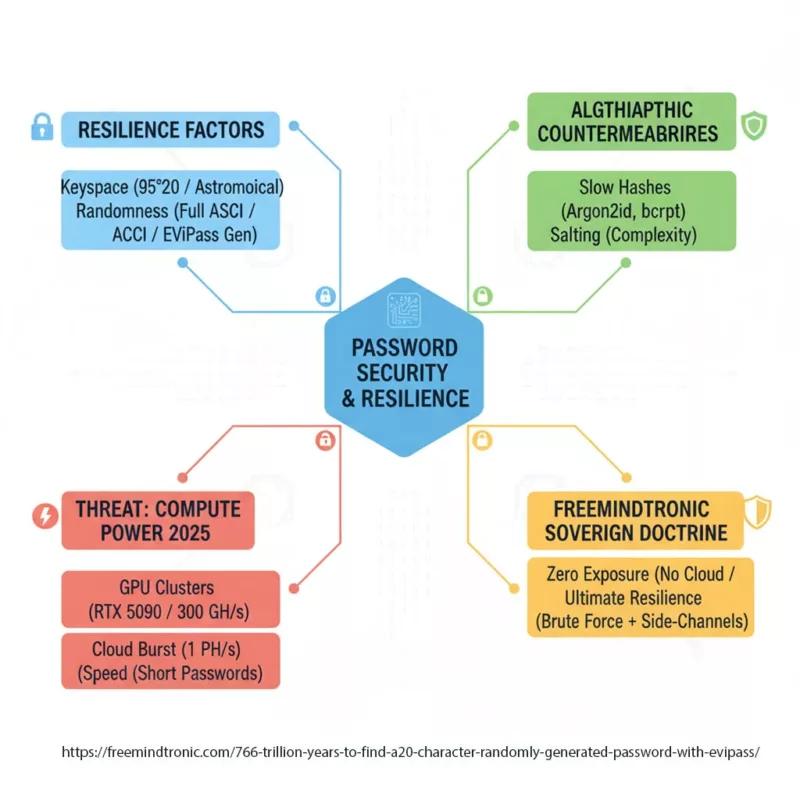
The brute-force infeasibility demonstrated here strengthens the case for combining cryptographic best practices (KDFs, salts), hardware anchoring (HSM/NFC), and user-friendly password managers (EviPass). Future research will compare operational attack chains, side-channels and hybrid attacks to refine protective doctrines.
Weak Signals — Emerging Threats
- AI-assisted brute-force optimizations could reduce entropy exploration, though current gains remain marginal vs 20-char ASCII codes.
- Quantum computing acceleration for hash inversion (beyond Shor’s factoring) remains theoretical but under exploration.
- Specialized ASICs for password cracking may alter economics but not exponential scales.
- LLM-driven dictionary generation and semantic PCFGs improve targeted attacks on structured human passwords (see Recent Developments).
Recent Developments (2022–2025)
- Hybrid Attacks — In 2025, researchers proposed combining classical rainbow tables with Grover’s quantum algorithm to accelerate inversion of hashed passwords with human patterns (arXiv 2507.14600).
- GPU Acceleration — Hive Systems (2025) reports that password cracking times have dropped by ~20% in one year thanks to consumer and AI-grade GPUs (Hive Systems 2025). Benchmarks of NVIDIA RTX 5090 confirm this acceleration for 8-character passwords (MojoAuth 2025).
- Argon2 Deployments — An analysis of real-world GitHub projects shows many Argon2 implementations use weak parameters, reducing expected security against brute force (arXiv 2504.17121).
- NIST PQC Standards — In 2024–2025, NIST finalized FIPS 203 / 204 / 205, selecting algorithms like SPHINCS+ (signatures) and HQC (KEM). This evolution will directly impact future HSM designs (PassCypher HSM PGP/ PassCypher NFC HSM).
- Semantic Password Attacks — New AI-assisted probabilistic context-free grammar models (SE#PCFG, 2023) enhance attacks against structured human passwords (arXiv 2306.06824).
Glossary
- ASCII — American Standard Code for Information Interchange. Historically, EviTag NFC HSM (2021) used 94 printable characters; current PassCypher NFC HSM and HSM PGP use the full 95 printable ASCII characters.
- Brute force — Exhaustive testing of all possible combinations to guess a secret.
- GPU cluster — Array of graphics processors used for parallel computation in password cracking.
- HSM — Hardware Security Module; secure enclave for managing secrets like cryptographic keys.
Password Cracking Estimates — Updated Reference Table (2025)
⮞ Summary
This section visualizes estimated brute-force times by length and character complexity, using aggressive 2025 configurations (GPU clusters / ASIC / cloud burst). These are baseline brute-force orders of magnitude — not accounting for side-channels or host/DOM leaks.

Calculation parameters
- Hashing target — NTLM (baseline), SHA-1 (fast), bcrypt (low-cost example), PBKDF2 (misconfigured).
- Compute power (assumed) — 1× RTX 5090 ≈ 300 GH/s (300×109 H/s); 12× RTX5090 ≈ 3.6 TH/s; cloud burst ≈ 1 PH/s (1×1015 H/s).
- Keyspace —
complexity^length(e.g., full ASCII95^N). - Time estimate —
keyspace / hashes_per_second. We report the 50% median (divide by 2).
Reference table (NTLM, illustrative orders of magnitude)
| Length × charset | Keyspace (≈) | NTLM — 1×RTX5090 (300 GH/s) — median (50%) | NTLM — 12×RTX5090 (3.6 TH/s) — median (50%) | NTLM — Cloud burst 1 PH/s — median (50%) |
|---|---|---|---|---|
| 8 chars · lowercase (26) | 26^8 ≈ 2.088×10^11 | ~0.35 s | ~0.03 s | ~0.0001 s |
| 10 chars · mixed letters+digits (~62) | 62^10 ≈ 8.393×10^17 | ~16.2 days | ~1.35 days | ~7.0 minutes |
| 12 chars · mixed + symbols (~80) | 80^12 ≈ 6.872×10^22 | ~3,630 years | ~303 years | ~1.09 years |
| 14 chars · mixed + symbols (~90) | 90^14 ≈ 2.29×10^27 | ~121 million years | ~10.1 million years | ~36.3 thousand years |
| 20 chars · full ASCII (95) | 95^20 ≈ 3.582×10^39 | ~1.89×10^20 years | ~1.58×10^19 years | ~5.68×10^16 years |
FAQ
Because the keyspace (94^20 possibilities in 2021 with EviTag NFC HSM, and 95^20 possibilities with current PassCypher HSMs) is astronomically large. Even with modern GPU clusters, exhaustive brute force would take ~766 trillion years under the simulator’s baseline.
Radeon City set a historic benchmark (2012) with ~350 billion NTLM guesses/sec, illustrating how GPU parallelism reshaped brute-force feasibility for short, human-style passwords. It serves as a comparative baseline, not a present-day spec.
Yes, as a reference point for password strength. It caps inputs at 20 chars / 90 symbols, while Freemindtronic generators target up to 20 chars using 94 printable ASCII symbols in 2021 (EviTag) and 95 with current PassCypher HSMs.
It increases the keyspace (95^20 vs 94^20), making brute force even less feasible. The ~766-trillion-year figure remains a conservative order-of-magnitude for random 20-char ASCII secrets.
Prefer slow, memory-hard KDFs (e.g., Argon2id with adequate memory and iterations, or bcrypt/PBKDF2 with strong cost factors). Security depends on both algorithm choice and robust parameterization.
They compress times for short or patterned passwords, but do not meaningfully change the infeasibility of brute-forcing truly random 20-character ASCII passwords stored and handled via HSM/NFC.
Known quantum speedups don’t make exhaustive search over 20-char full-ASCII random space practical today. The keyspace remains prohibitive; robust KDFs and hardware anchoring are still decisive.
Use hardware-backed or audited generators that draw uniformly from the full symbol set, avoid user patterns, and store the secret in HSM/NFC to prevent exposure in the DOM or host memory.
Yes. Freemindtronic uses pedagogical infographics to illustrate brute-force timelines (e.g., 766 trillion years), comparing them to cosmic scales like the age of the universe (~14 billion years). These visuals help non-experts grasp the resilience of hardware-anchored secrets.
Because cloud-based systems expose secrets to remote memory access, browser leaks, and third-party dependencies. Freemindtronic’s doctrine favors offline, hardware-anchored storage (NFC HSM) with zero cloud exposure, ensuring sovereign control and auditability.
Entropy measures unpredictability (in bits), while keyspace counts total combinations. A 20-character password using 95 ASCII symbols has ≈131 bits of entropy and a keyspace of 95^20 — both metrics confirm brute-force infeasibility when randomness is guaranteed.
EviPass stores secrets in a contactless NFC HSM, never exposing them to browser memory, clipboard, or cloud sync. Unlike traditional managers, it enforces physical access control and zero-trust logic by design.
Side-channel attacks target implementation flaws (timing, power, EM emissions), not the keyspace itself. Freemindtronic’s doctrine includes shielding, jamming, and volatile memory to mitigate such risks — beyond brute force.
Yes. AES-256 remains essential for symmetric encryption. The point is not to replace it, but to ensure that keys and passwords used with AES are generated and stored in ways that resist brute force and side-channel compromise.
Each access to a stored secret can be logged locally within the HSM, with optional timestamping and usage metadata. This enables forensic traceability without exposing the secret itself — a key feature of sovereign resilience.
To make abstract numbers tangible. Saying “766 trillion years” means little without context — comparing it to the universe’s age (~14 billion years) helps readers grasp the scale of cryptographic resilience in relatable terms.
Because brute force provides a universal baseline. It allows comparison across architectures, algorithms, and hardware generations. Even if impractical, it remains the most transparent way to quantify password resilience.
EviPass stores secrets in a contactless NFC HSM, never exposing them to browser memory, clipboard, or cloud sync. Unlike traditional managers, it enforces physical access control and zero-trust logic by design.
Side-channel attacks target implementation flaws (timing, power, EM emissions), not the keyspace itself. Freemindtronic’s doctrine includes shielding, jamming, and volatile memory to mitigate such risks — beyond brute force.
Yes. AES-256 remains essential for symmetric encryption. The point is not to replace it, but to ensure that keys and passwords used with AES are generated and stored in ways that resist brute force and side-channel compromise.
Each access to a stored secret can be logged locally within the HSM, with optional timestamping and usage metadata. This enables forensic traceability without exposing the secret itself — a key feature of sovereign resilience.
To make abstract numbers tangible. Saying “766 trillion years” means little without context — comparing it to the universe’s age (~14 billion years) helps readers grasp the scale of cryptographic resilience in relatable terms.
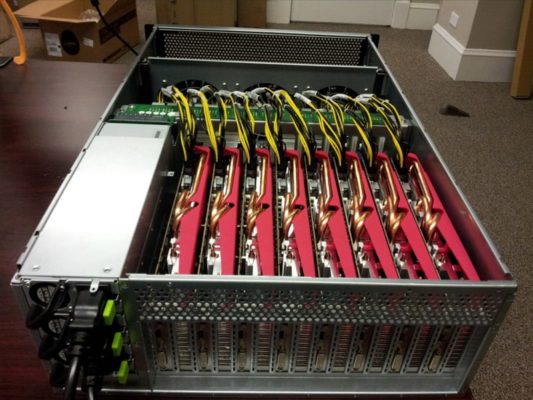
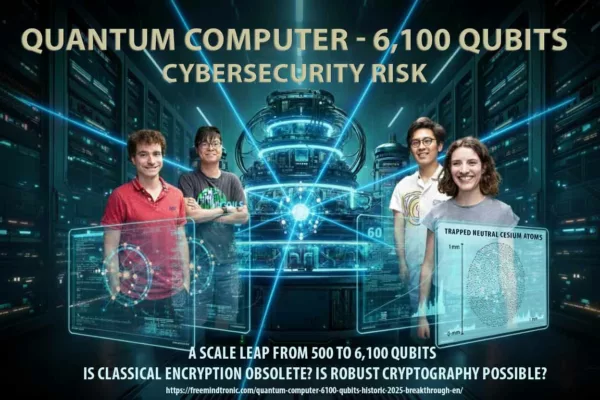
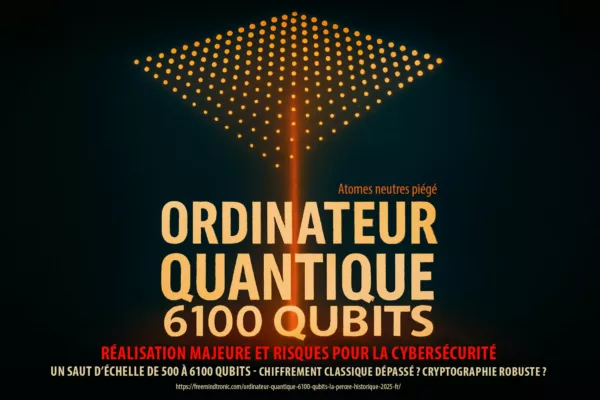
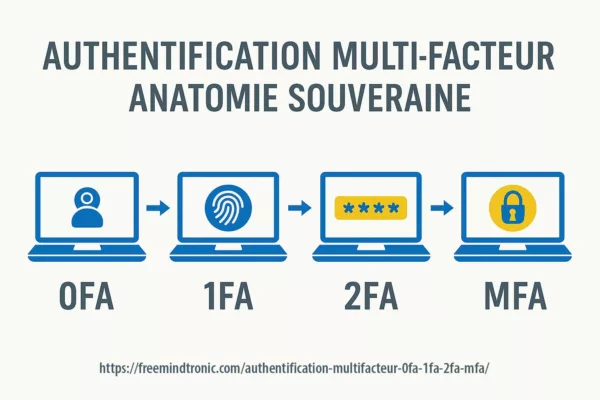
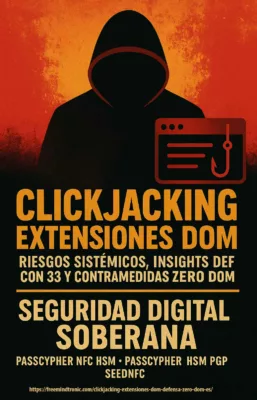
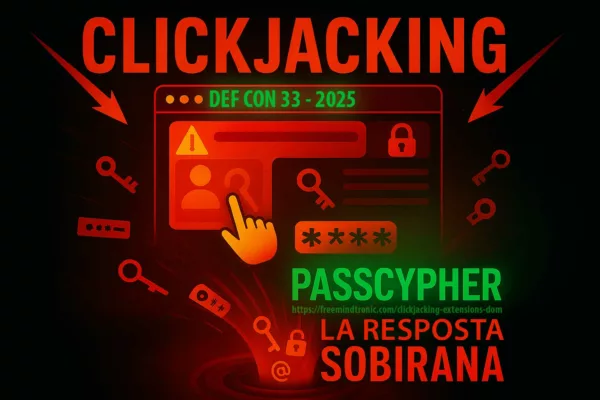
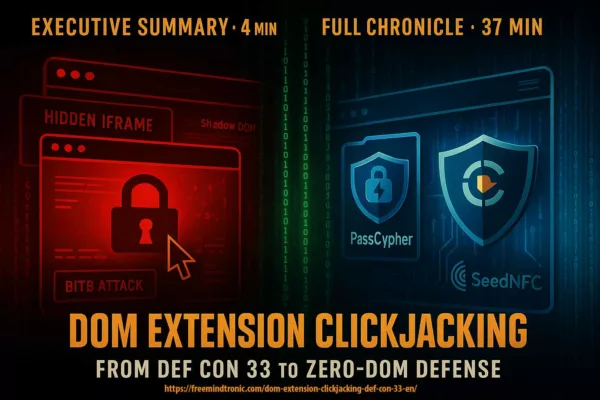
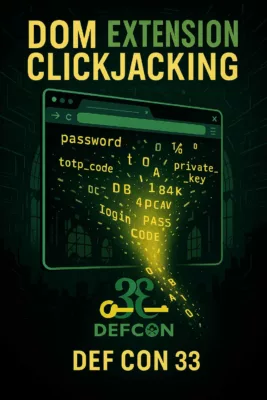
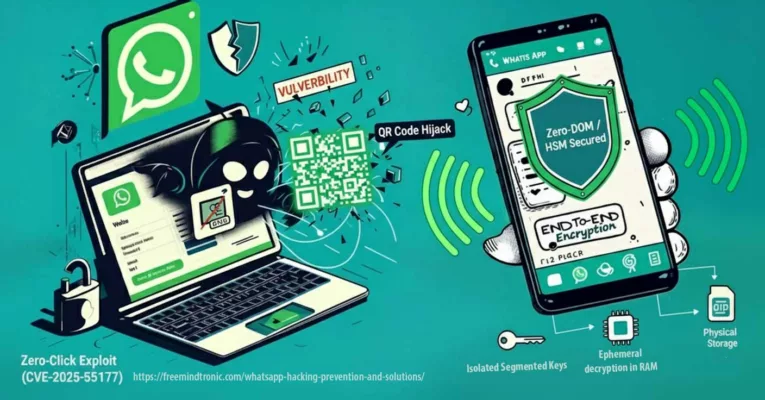
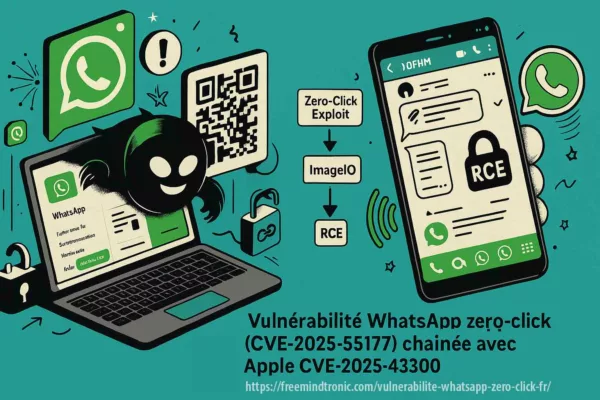
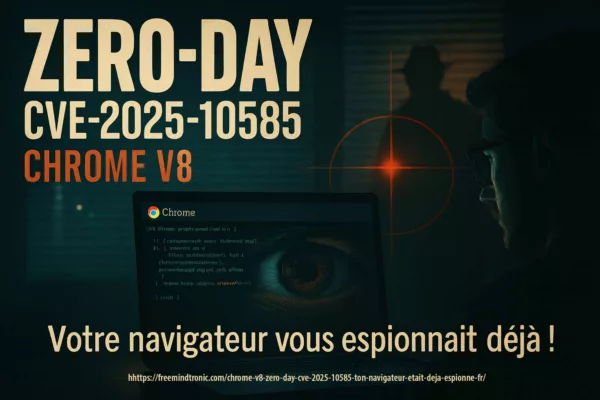
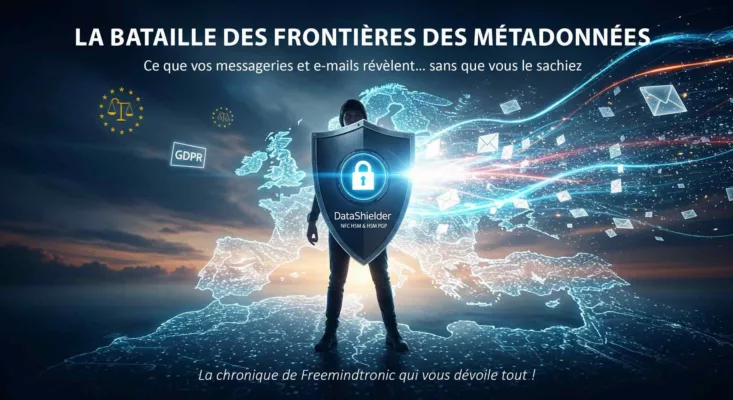
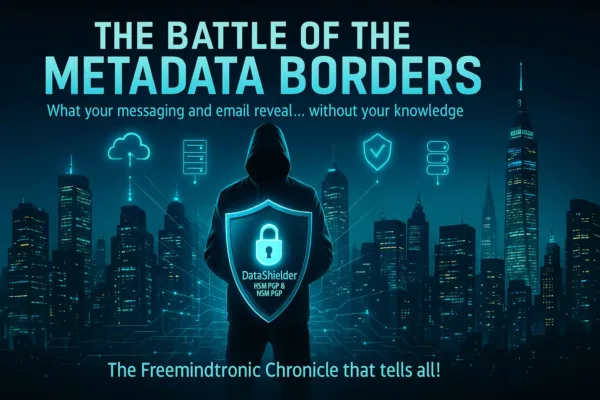
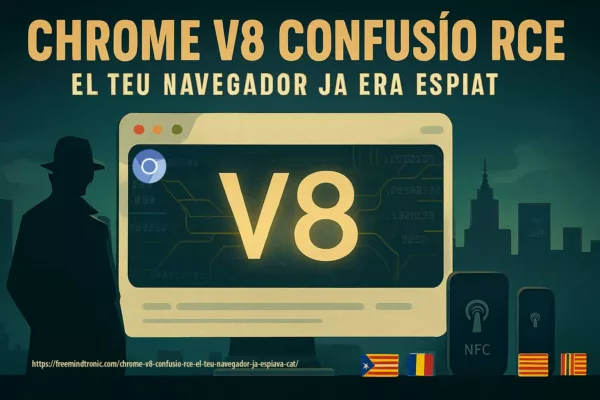
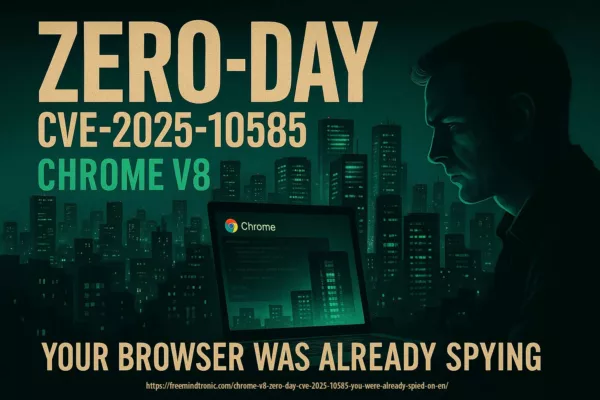
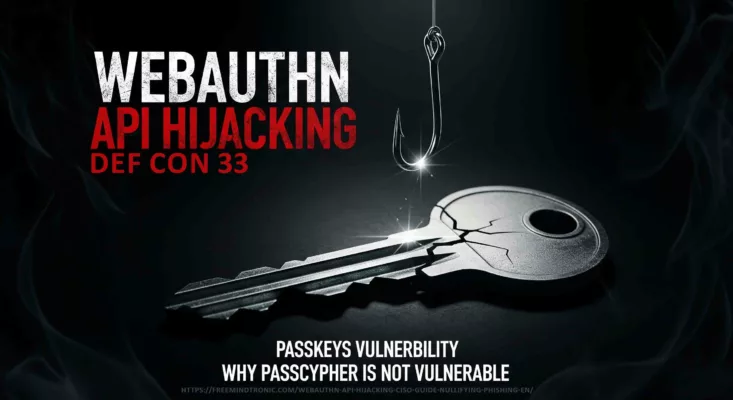
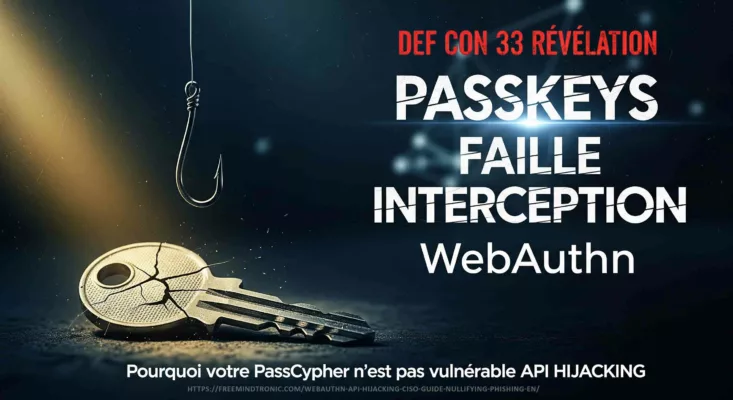

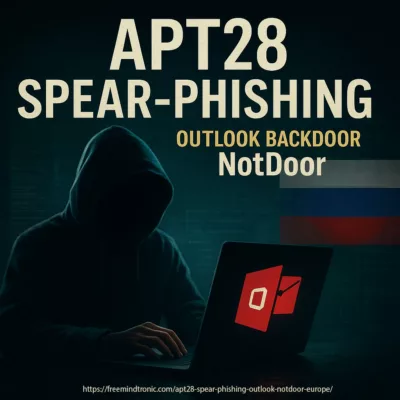
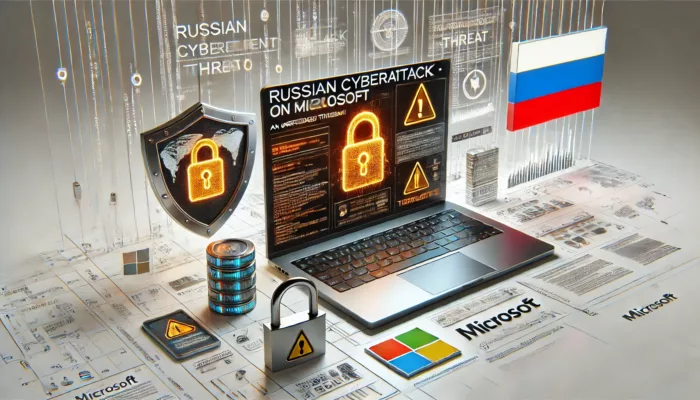

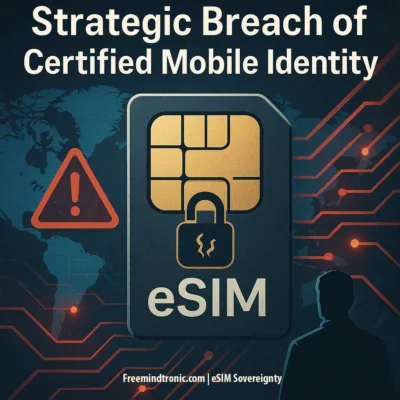
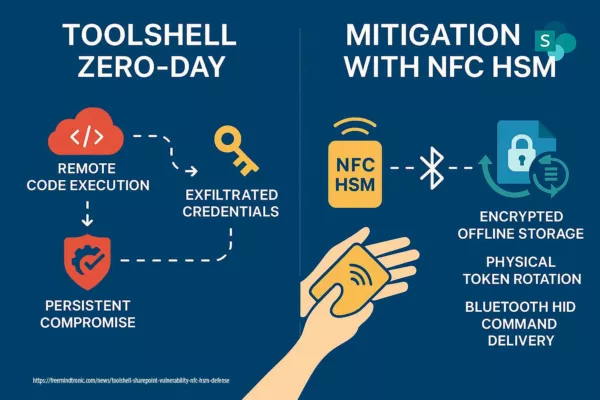
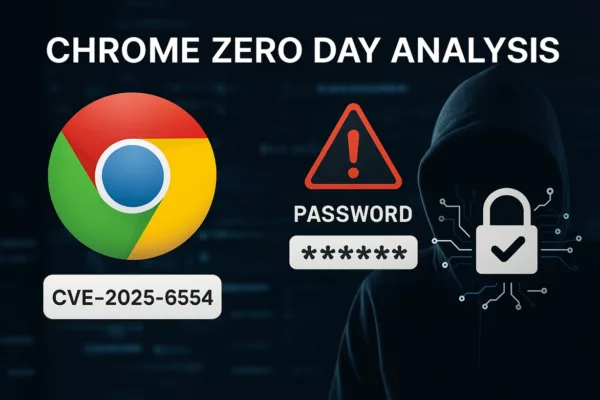
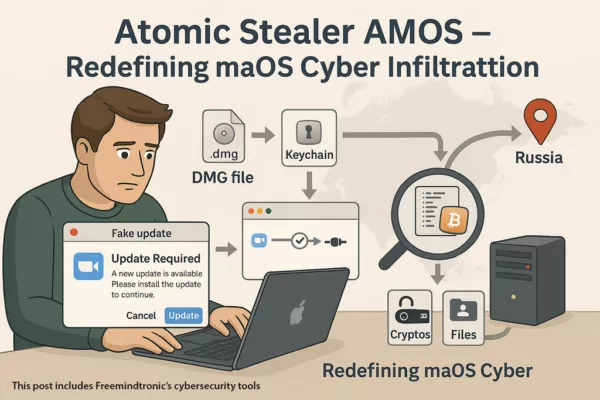
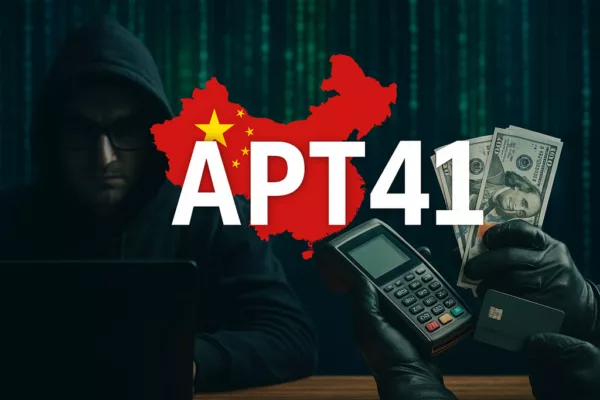
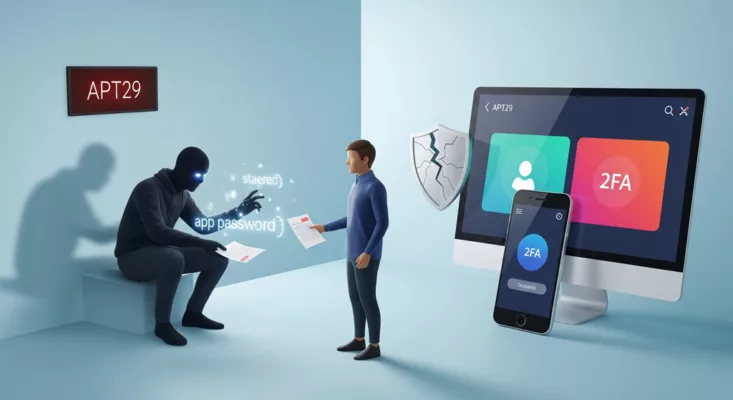
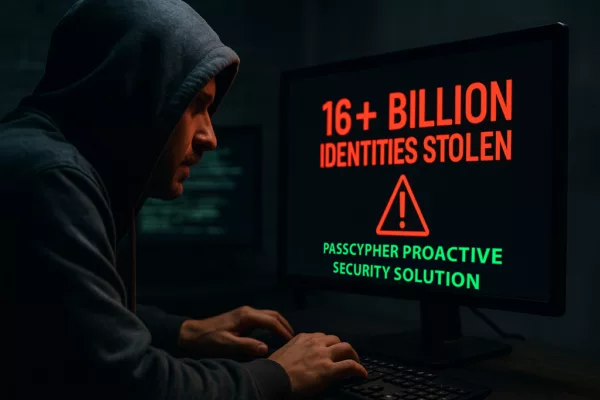
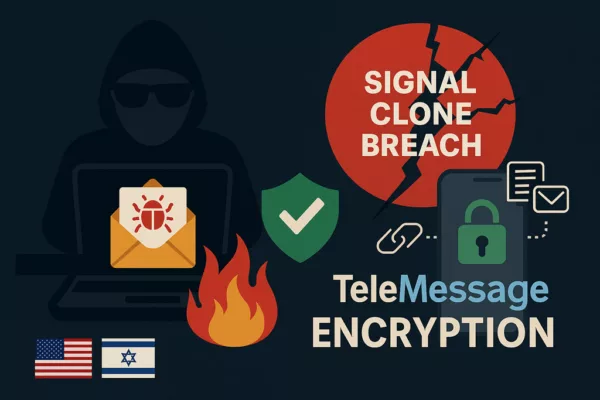
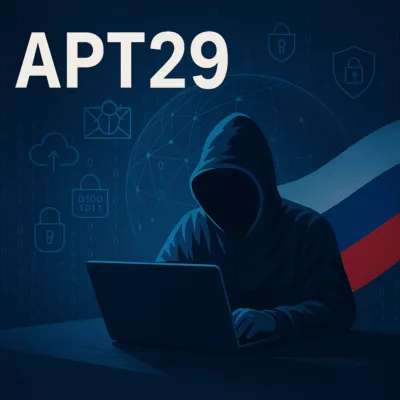
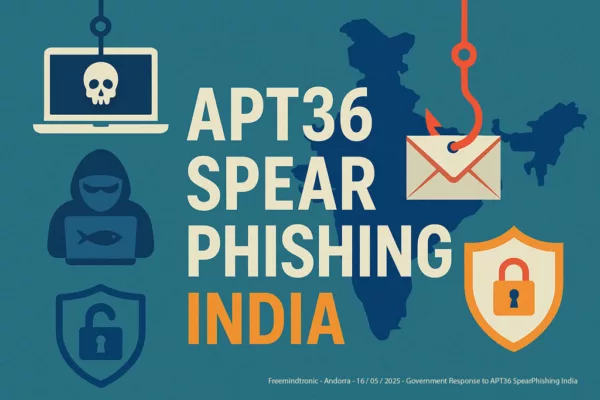
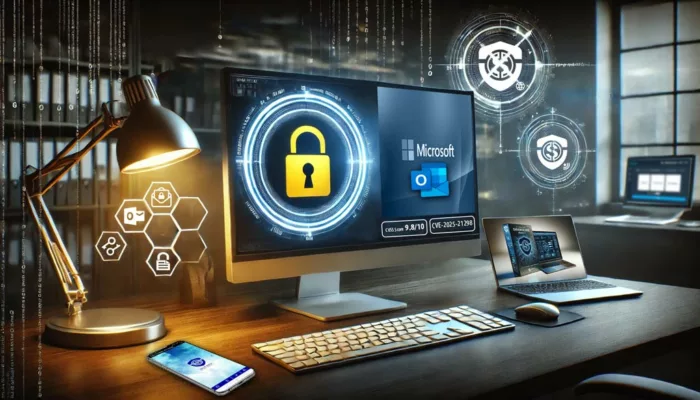
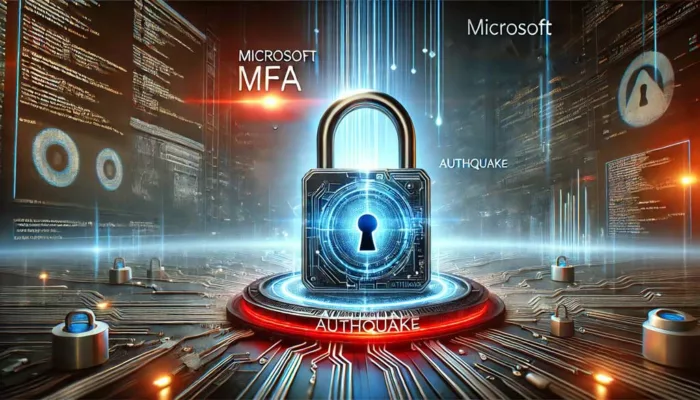
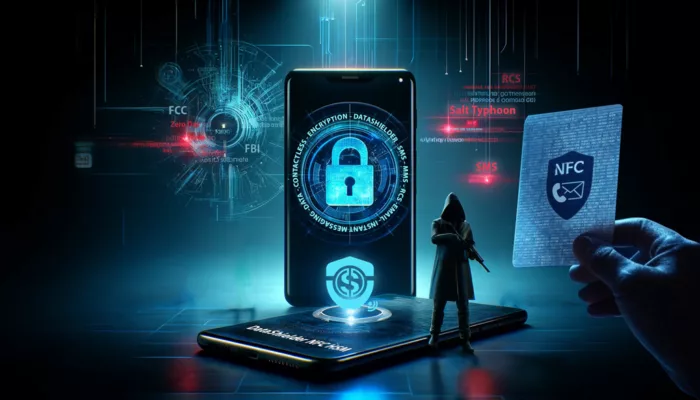
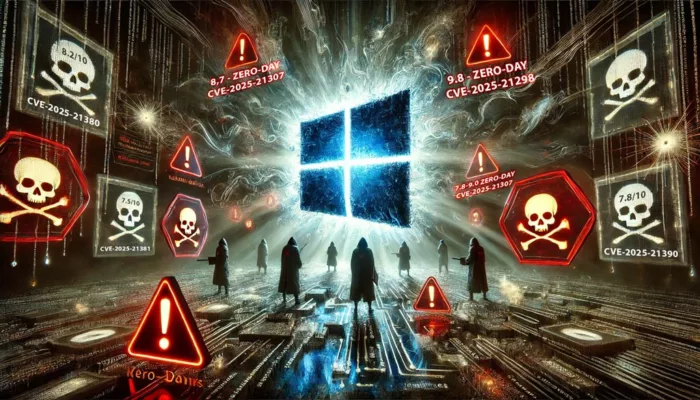
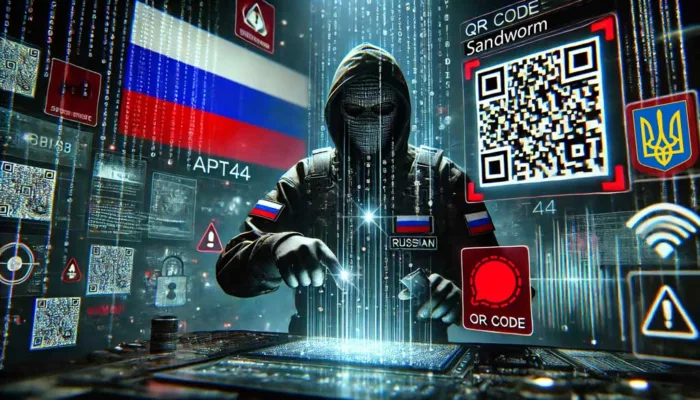
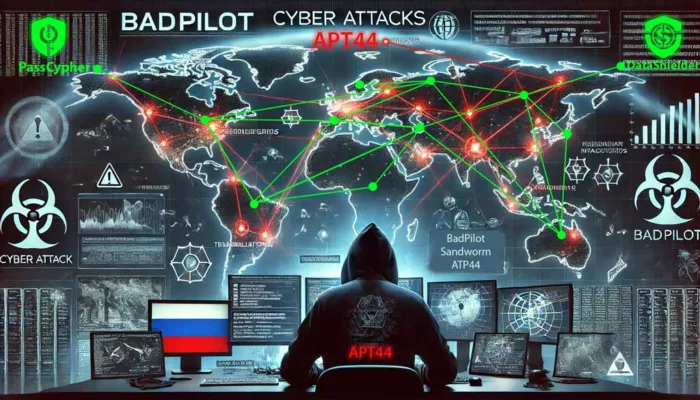
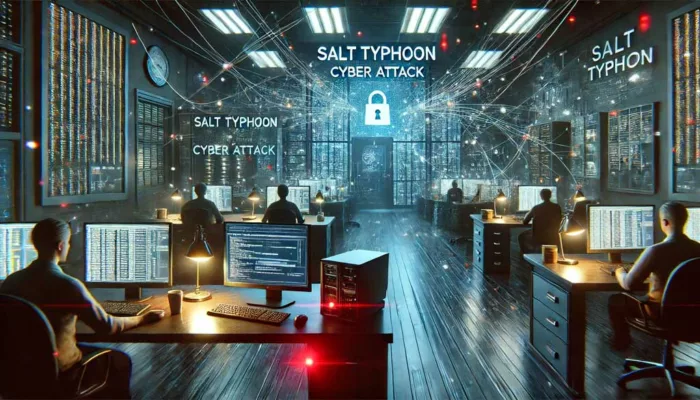
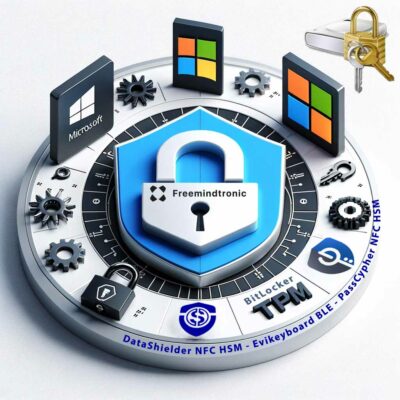


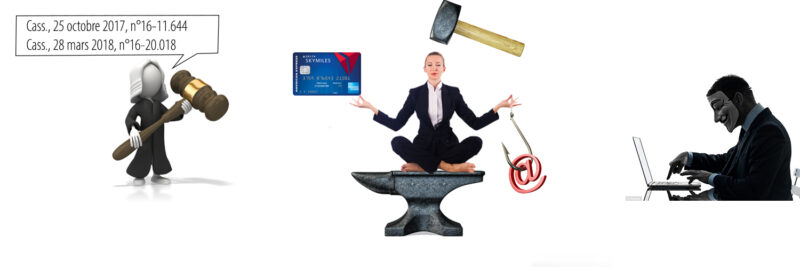
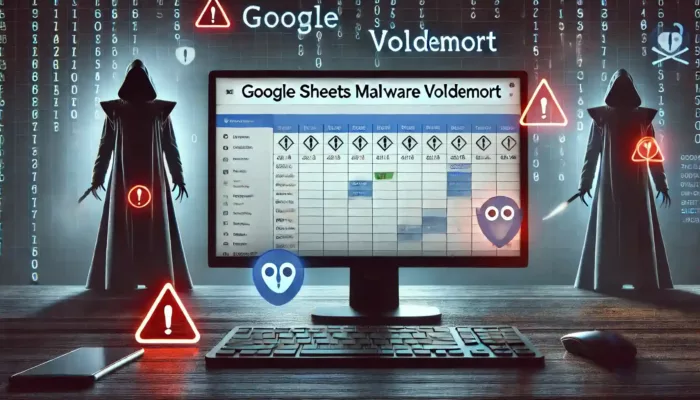

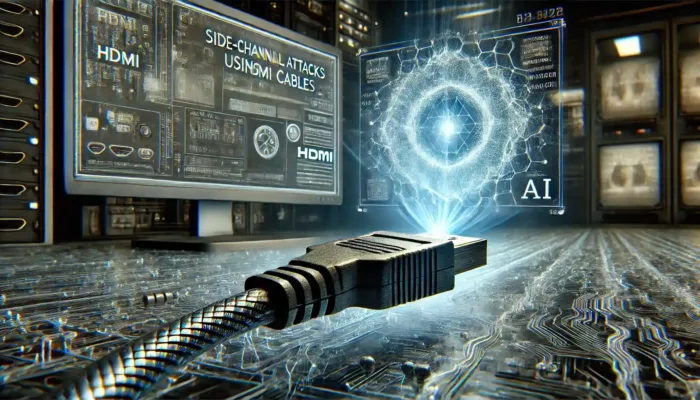
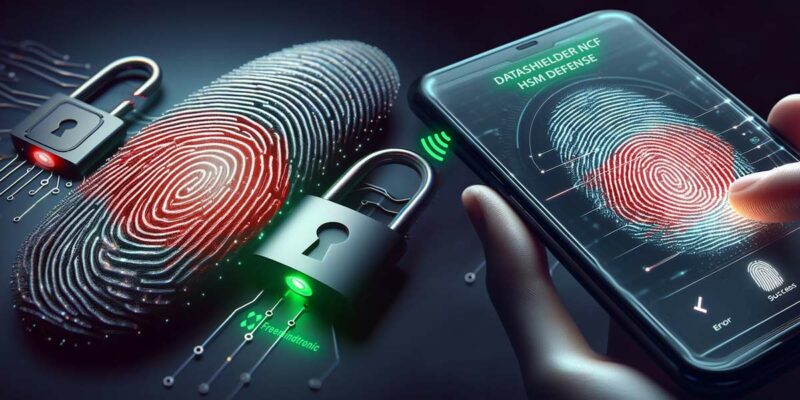
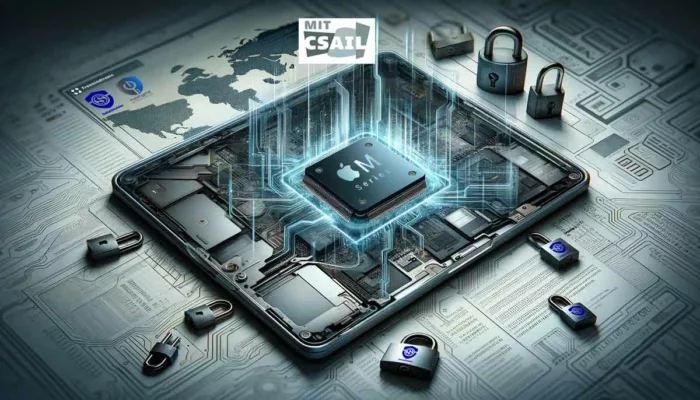
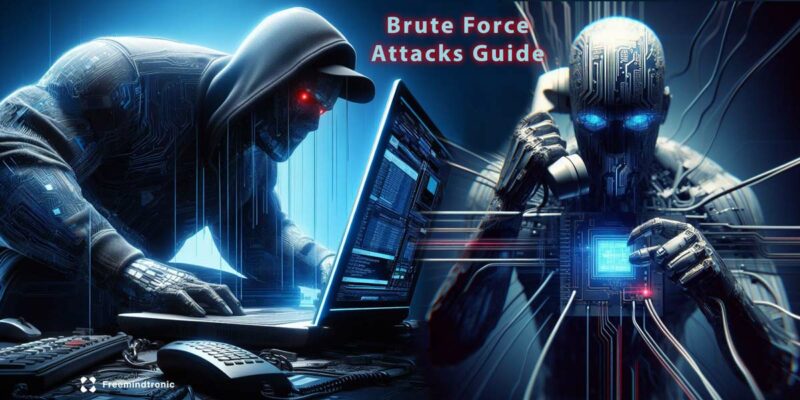

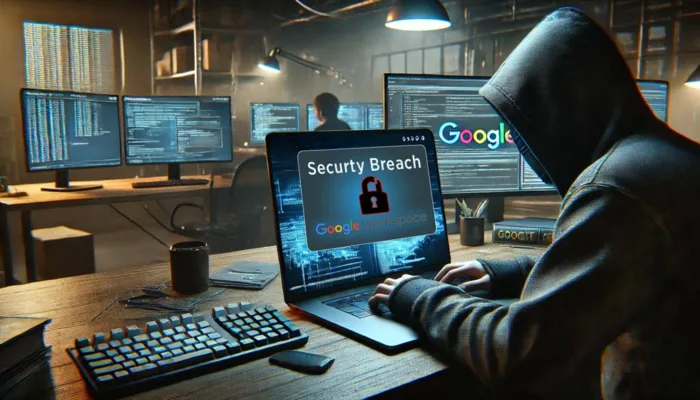

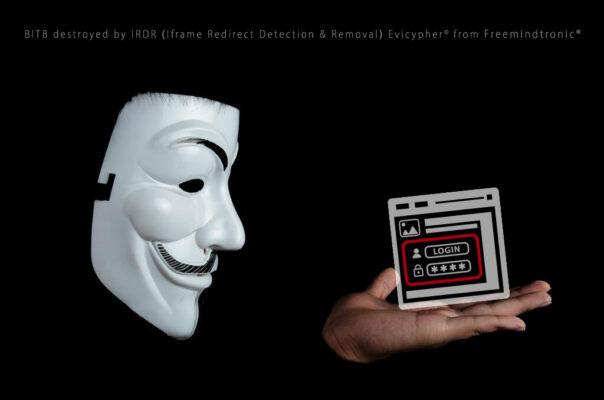
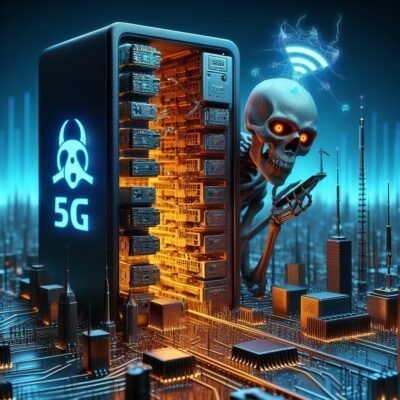
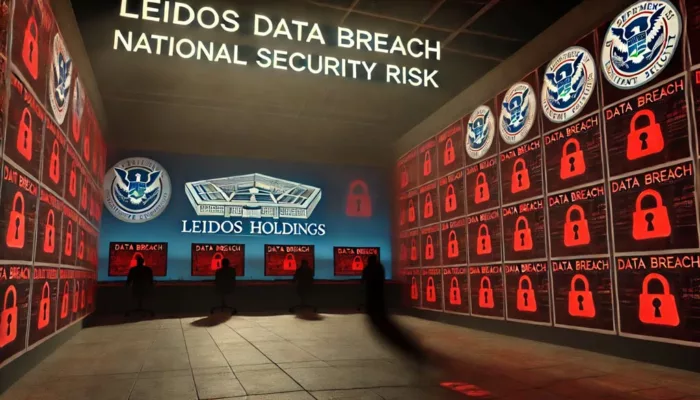
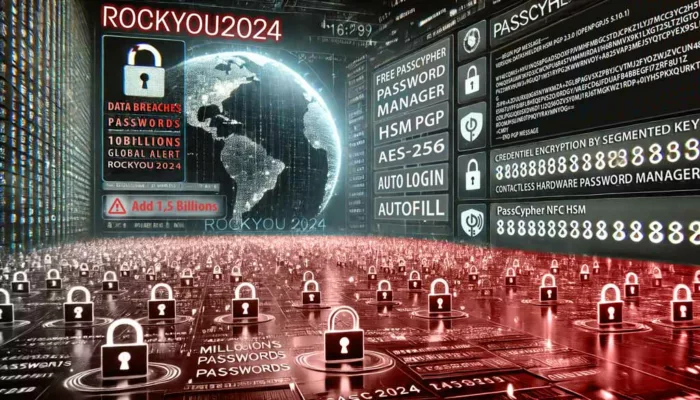
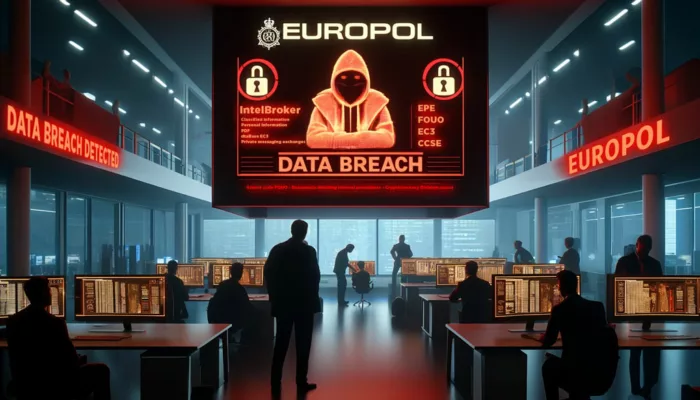
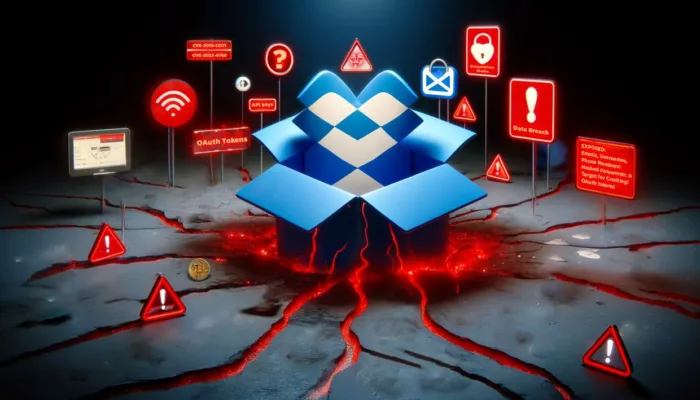

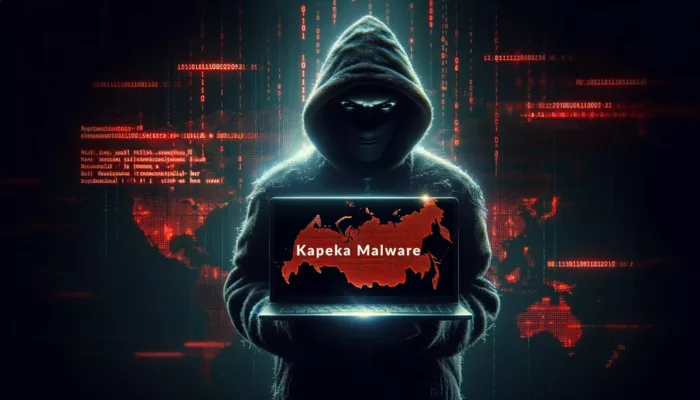

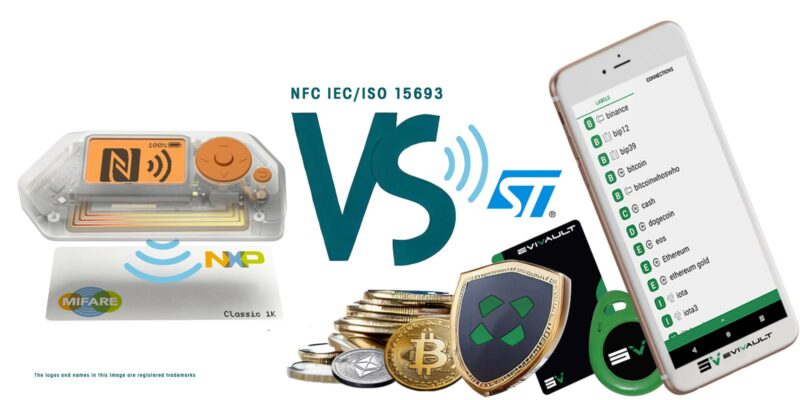




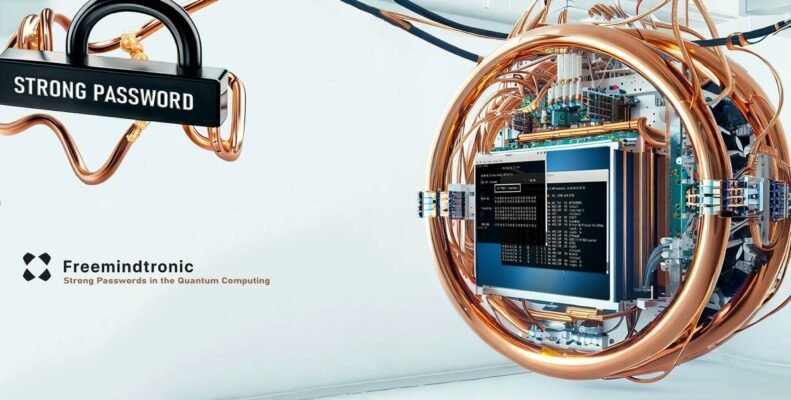
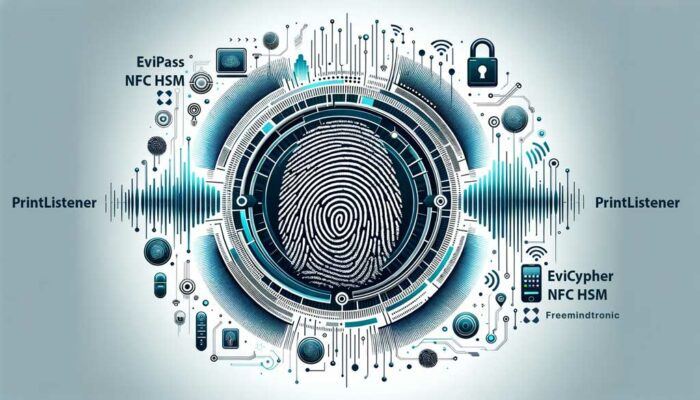
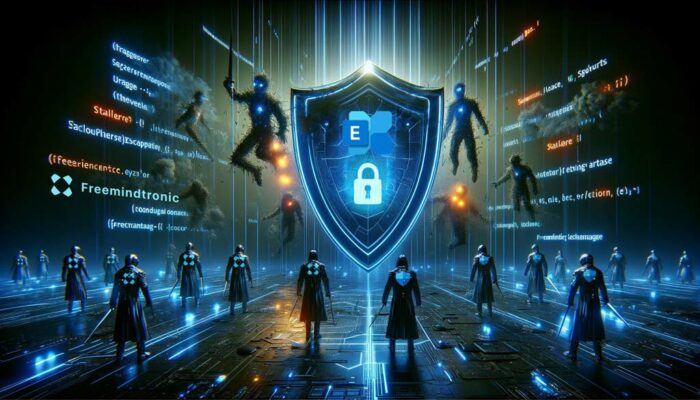



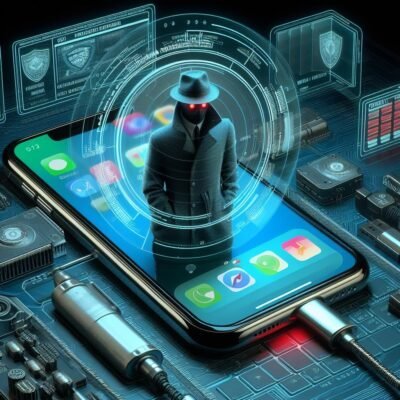
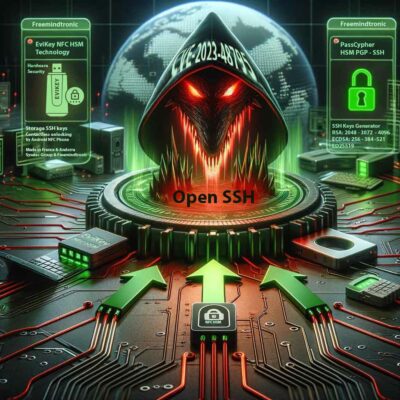
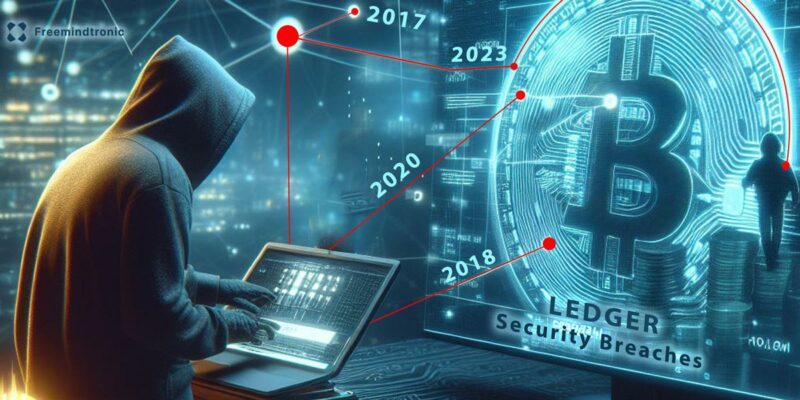
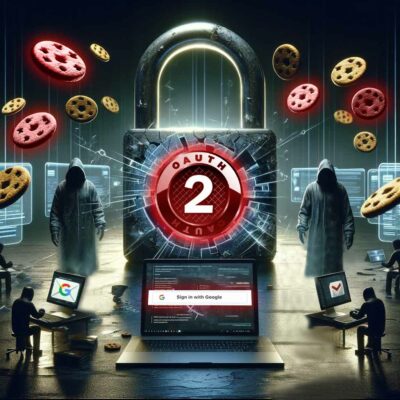
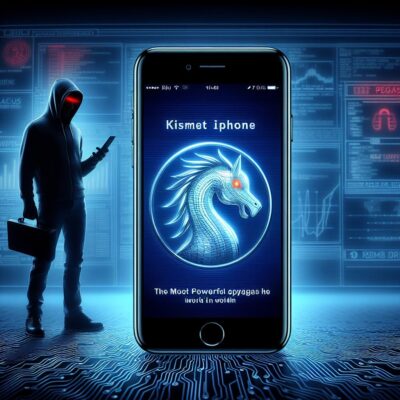
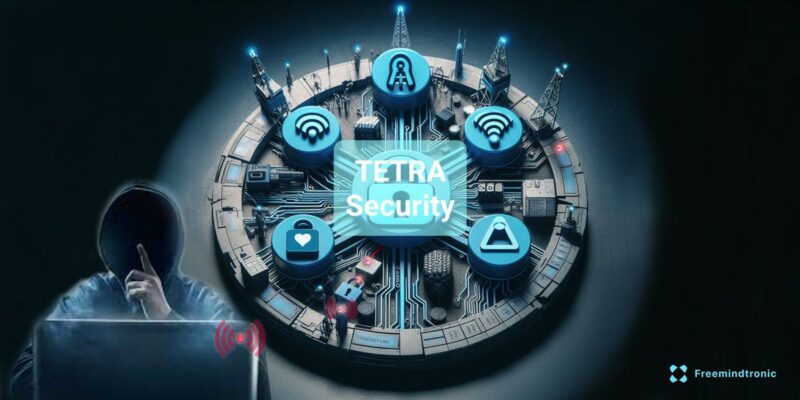
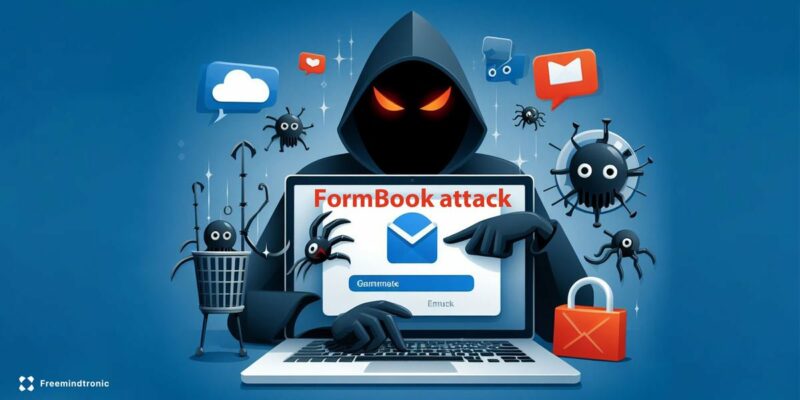
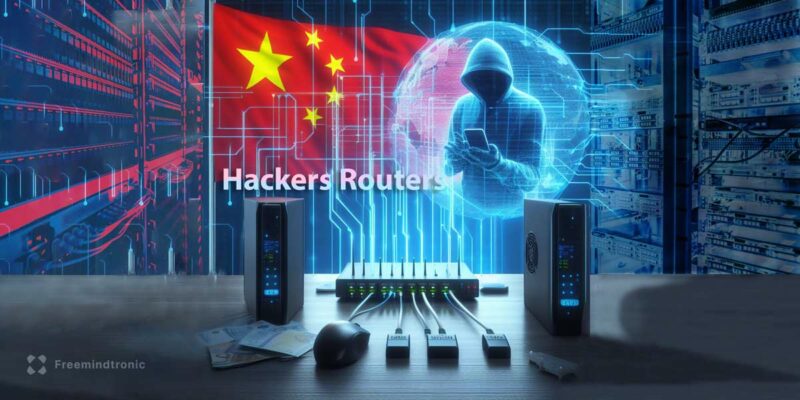
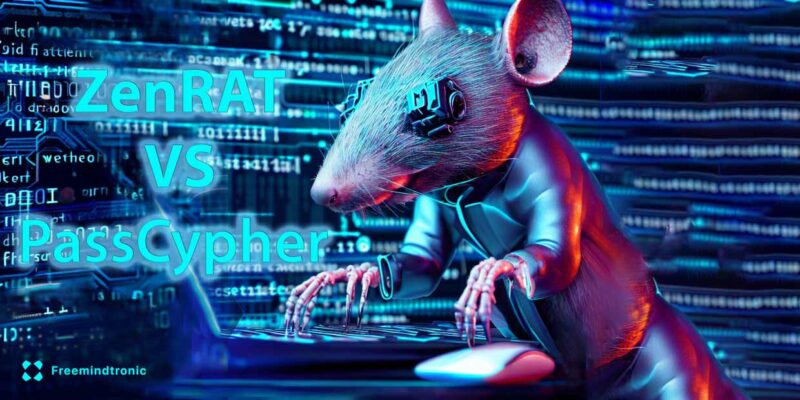


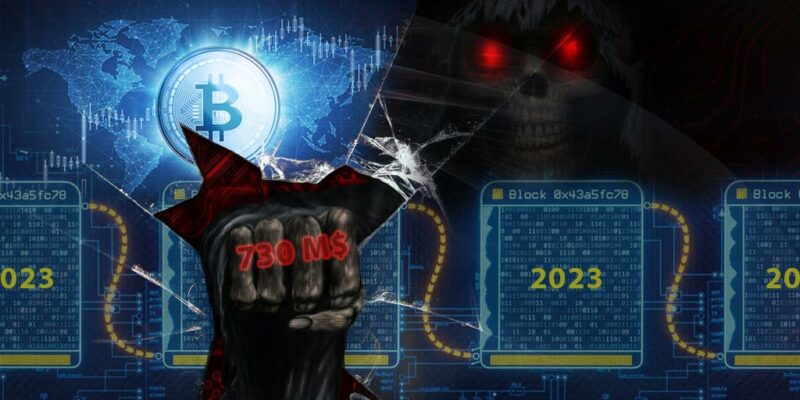
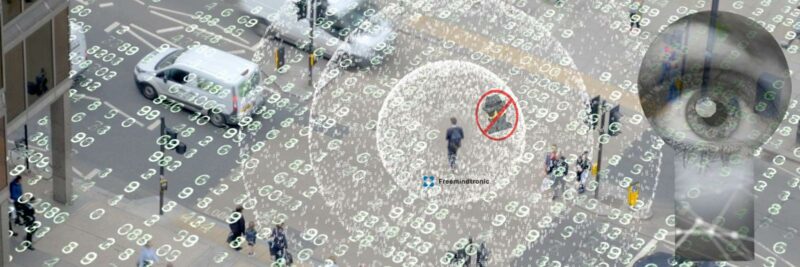




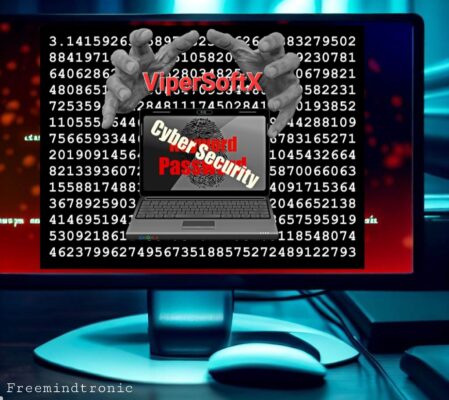
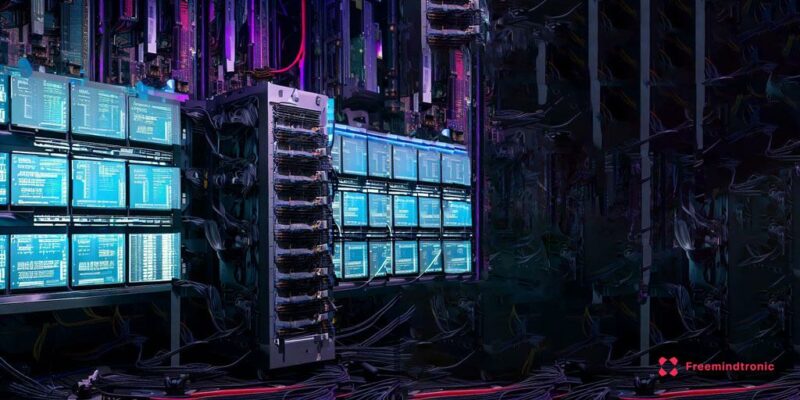
Pingback: Quantum computer 6100 qubits ⮞ Historic 2025 breakthrough - Freemindtronic